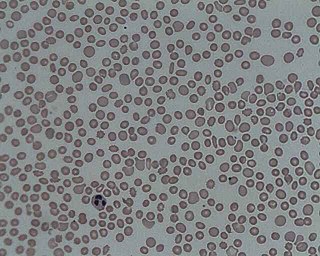
Pediatrics is the branch of medicine that involves the medical care of infants, children, and adolescents. The American Academy of Pediatrics recommends people be under pediatric care through the age of 21. In the United Kingdom, paediatrics covers patients until age 18. Worldwide age limits of pediatrics have been trending up year over year. A medical doctor who specializes in this area is known as a pediatrician, or paediatrician. The word pediatrics and its cognates mean "healer of children"; they derive from two Greek words: παῖς and ἰατρός. Pediatricians work in hospitals and children's hospitals particularly those working in its subspecialties, and as outpatient primary care physicians.

Tetanus, also known as lockjaw, is a bacterial infection characterized by muscle spasms. In the most common type, the spasms begin in the jaw and then progress to the rest of the body. Each spasm usually lasts a few minutes. Spasms occur frequently for three to four weeks. Some spasms may be severe enough to fracture bones. Other symptoms of tetanus may include fever, sweating, headache, trouble swallowing, high blood pressure, and a fast heart rate. Onset of symptoms is typically three to twenty-one days following infection. Recovery may take months. About ten percent of cases prove fatal.
Drug withdrawal, drug withdrawal syndrome, or substance withdrawal syndrome, is the group of symptoms that occur upon the abrupt discontinuation or decrease in the intake of medicational or recreational drugs.

Thrombocytopenia is a condition characterized by abnormally low levels of platelets, also known as thrombocytes, in the blood.

Clonidine, sold as the brand name Catapres among others, is a medication used to treat high blood pressure, attention deficit hyperactivity disorder, drug withdrawal, menopausal flushing, diarrhea, spasticity and certain pain conditions. It is used by mouth, by injection, or as a skin patch. Onset of action is typically within an hour with the effects on blood pressure lasting for up to eight hours.
Sulfonylureas are a class of organic compounds used in medicine and agriculture, for example as antidiabetic drugs widely used in the management of diabetes mellitus type 2. They act by increasing insulin release from the beta cells in the pancreas. A number of sulfonylureas are also used as herbicides, because they can interfere with plant biosynthesis of certain amino acids. Sulfonylureas are also used experimentally to inhibit interleukin 1 beta release from the NALP3 inflammasome.

Buprenorphine is an opioid used to treat opioid use disorder, acute pain, and chronic pain. It can be used under the tongue (sublingual), in the cheek (buccal), by injection (intravenous), as a skin patch (transdermal), or as an implant. For opioid use disorder, it is typically started when withdrawal symptoms have begun and for the first two days of treatment under direct observation of a health-care provider. The combination formulation of buprenorphine/naloxone (Suboxone) is recommended to discourage misuse by injection. Maximum pain relief is generally within an hour with effects up to 24 hours.

Ceftriaxone, sold under the brand name Rocephin, is an antibiotic used for the treatment of a number of bacterial infections. These include middle ear infections, endocarditis, meningitis, pneumonia, bone and joint infections, intra-abdominal infections, skin infections, urinary tract infections, gonorrhea, and pelvic inflammatory disease. It is also sometimes used before surgery and following a bite wound to try to prevent infection. Ceftriaxone can be given by injection into a vein or into a muscle.

Oxazepam is a short-to-intermediate-acting benzodiazepine. Oxazepam is used for the treatment of anxiety and insomnia and in the control of symptoms of alcohol withdrawal syndrome.

Doxylamine is a first-generation antihistamine used as a short-term sedative and hypnotic (sleep aid) or in combination formulations to provide night-time allergy and cold relief. It provides a calmative effect in preparations containing the analgesics paracetamol (acetaminophen) and codeine. It is prescribed in combination with vitamin B6 (pyridoxine) to prevent morning sickness in pregnant women. Its fetal safety rating is "A" (no evidence of risk).

Phenobarbital, also known as phenobarbitone or phenobarb, or by the trade name Luminal, is a medication of the barbiturate type. It is recommended by the World Health Organization (WHO) for the treatment of certain types of epilepsy in developing countries. In the developed world, it is commonly used to treat seizures in young children, while other medications are generally used in older children and adults. It may be used intravenously, injected into a muscle, or taken by mouth. The injectable form may be used to treat status epilepticus. Phenobarbital is occasionally used to treat trouble sleeping, anxiety, and drug withdrawal and to help with surgery. It usually begins working within five minutes when used intravenously and half an hour when administered by mouth. Its effects last for between four hours and two days.
Antidepressant discontinuation syndrome, also called antidepressant withdrawal syndrome, is a condition that can occur following the interruption, reduction, or discontinuation of antidepressant medication following its continuous use of at least a month. The symptoms may include flu-like symptoms, trouble sleeping, nausea, poor balance, sensory changes, anxiety, and depression. The problem usually begins within three days and may last for several months. Rarely psychosis may occur.

Mivacurium chloride is a short-duration non-depolarizing neuromuscular-blocking drug or skeletal muscle relaxant in the category of non-depolarizing neuromuscular-blocking drugs, used adjunctively in anesthesia to facilitate endotracheal intubation and to provide skeletal muscle relaxation during surgery or mechanical ventilation.
Benign familial neonatal seizures (BFNS), formerly called benign familial neonatal convulsions (BFNC), is a rare autosomal dominant inherited form of seizures. It manifests in newborns, normally within the first 7 days of life, as tonic-clonic seizures. Infants are otherwise normal between attacks and develop without incident. Attacks normally spontaneously cease within the first 15 weeks of life. Lifetime susceptibility to seizures is increased, as 16% of those diagnosed with BFNE earlier in life will go on to have seizures versus a 2% lifetime risk for the general population. There are three known genetic causes of BFNE, two being the voltage-gated potassium channels KCNQ2 (BFNC1) and KCNQ3 (BFNC2) and the third being a chromosomal inversion (BFNC3). There is no obvious correlation between most of the known mutations and clinical variability seen in BFNE.

The Medicines Act 1968 is an Act of Parliament of the United Kingdom, more properly: An Act to make new provision with respect to medicinal products and related matters, and for purposes connected therewith. It governs the control of medicines for human use and for veterinary use, which includes the manufacture and supply of medicines, and the manufacture and supply of (medicated) animal feeding stuffs.
The neonatal Fc receptor is a protein that in humans is encoded by the FCGRT gene. It is an Fc receptor which is similar in structure to the MHC class I molecule and also associates with beta-2-microglobulin. Further studies revealed a similar receptor in humans, leading to the naming as a neonatal Fc receptor. In humans, however, it is found in the placenta to help facilitate transport of mother's IgG to the growing fetus. It has also been shown to play a role in monitoring IgG and serum albumin turnover. Neonatal Fc receptor expression is up-regulated by the proinflammatory cytokine, TNF-α, and down-regulated by IFN-γ.

Talampanel is a drug which has been investigated for the treatment of epilepsy, malignant gliomas, and amyotrophic lateral sclerosis (ALS).

Neonatal withdrawal or neonatal abstinence syndrome (NAS) is a withdrawal syndrome of infants after birth caused by in utero exposure to drugs of dependence. The two types of NAS are prenatal and postnatal. Prenatal NAS is caused by discontinuation of drugs taken by the pregnant mother, while postnatal NAS is caused by discontinuation of drugs directly to the infant.

S-18986 is a positive allosteric modulator of the AMPA receptor related to cyclothiazide. It has nootropic and neuroprotective effects in animal studies, and induces both production of BDNF and AMPA-mediated release of noradrenaline and acetylcholine in the hippocampus and frontal cortex of the brain.
Ureaplasma urealyticum is a type of bacteria that can cause infection of the urinary tract and vagina. It can be passed from mother to infant during birth, or be sexually transmitted. Ureaplasma urealyticum can found in a majority of sexually active people, most of whom are asymptomatic. It can also be found in cultures in cases of pelvic inflammatory disease. It is not a commensal of the healthy uterine or amniotic microbiome. Infection with U. urealyticum can contribute to neonatal infection and negative birth outcomes.














